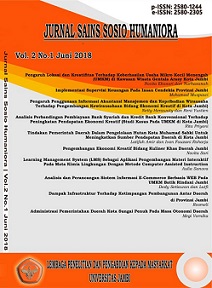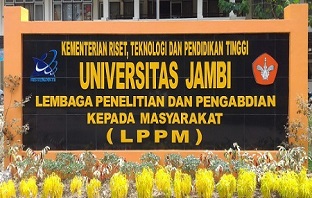The Effect of Using Illustrated Folklore Series in Reading Comperhension Ability of The Second Grade Students’ at SMP Negeri 24 Kota Jambi in Academic Year 2018
DOI:
https://doi.org/10.22437/jssh.v2i2.5966Keywords:
Illustrated Folklore Series, Reading ComprehensionAbstract
This study was a discussion about ability reading comprehension and the purpose of the study is to find out the application of Folklore series illustrate in improving the ability of students; reading comprehension of the Second Grade Students at SMP 24 Kota Jambi in Academic Year 2018. The research is designed by using pre and post-test design. This research design is chosen to refer to its superiority in controlling for extraneous factors that may influence the outcome though random assignment procedure. The pre-test result showed that the mean score of data was 53.66. From the pre-test result, it could be seen the lowest score was 36.66 and the highest score was 70. The post-test result in this group shown that the mean score of the post-test result is 74.32 test result with the lower score was 43.33 and the highest score was 90.The analysis the mean score of students; reading comprehension by using illustrated Folklore it effect of using ore Series was higher than mean score of students; reading comprehension not using illustrated Folklore Series. It means the effect of using comprehension at SMP Negeri 24 Kota Jambi was accepted.
Downloads
Downloads
Published
Versions
- 2018-12-07 (1)
- 2018-12-07 (1)
Issue
Section
License
-
Copyright and other proprietary rights relating to the article, such as patent rights,
-
The right to use the substance of the article in own future works, including lectures and books,
-
The right to reproduce the article for own purposes,
-
The right to self-archive the article (please read out deposit policy),
-
The right to enter into separate, additional contractual arrangements for the non-exclusive distribution of the article's published version (e.g., post it to an institutional repository or publish it in a book), with an acknowledgment of its initial publication in this jurnal sains sosio humaniora.








